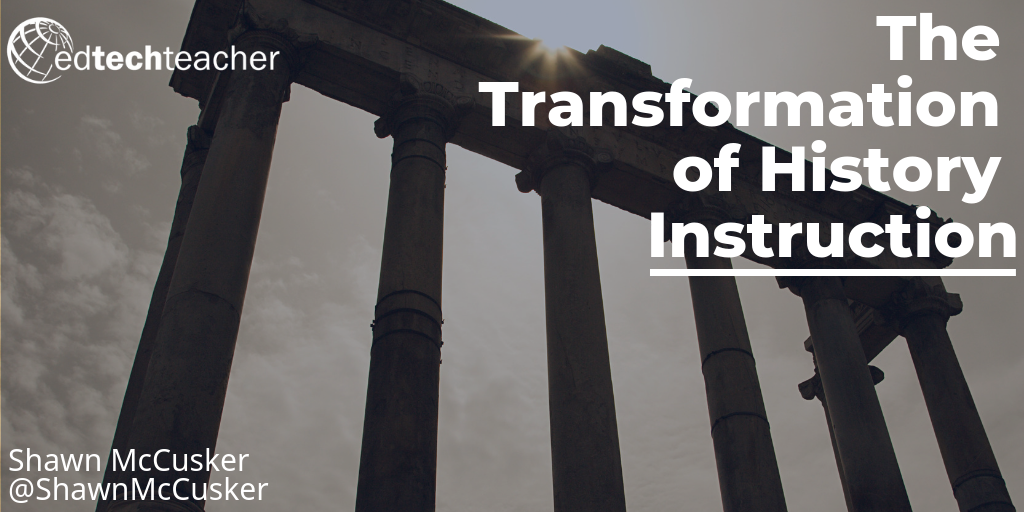
Technology has forever changed the way that History classes are taught. Once, not very long ago, history classes relied upon two key sources of information: the teacher and the textbook. Students read the textbook, and then the teachers shared their vast knowledge, usually through lecture. Research assignments were key, but they were limited by the resources that were present in the school library, and the reality was that those resources were often very limited in terms of scope and perspective.
That is not what history classes look like today. Not even a little bit. Today the internet allows us to access not just the actual primary sources that tell the stories of the past but many, many interpretations and perspectives of historical events. Today, and for the past two decades, the problem is not finding enough source materials and information, but finding a way to sift through all of the sources available, to find the best, most meaningful resources to help students learn.
While research is still central to any history course, the research paper is just one way to share student understanding. Now student documentaries and podcasts are as just as common, as well as a variety of other dynamic ways to share. Today students can be challenged to ask, “Who is my audience, and what is the best way to share my message with them?”
In rethinking the classroom, there are many tools today that offer the opportunity to take proven strategies to the next level of effectiveness. Here are just a few examples of how this can happen in the classroom:
The Classroom Discussion: In the past, classroom discussions were important. Today this is still true but many tools such as Seesaw, Flipgrid and Padlet allow the teacher to make sure that everyone participates rather than just 3 or 4 of the most extroverted students. By asking students to share comments using these tools, introverts, english language learners, and other students who might not feel comfortable engaging in a potentially heated discussion can add meaning to the conversation. This allows the teacher to draw attention to and value from their contributions.
Writing Instruction: In the old model of the history classroom, much of the time in the classroom had to focus on research since that was where students could access research. Today research is easily done online through incredible collections of curated resources such as the Doc Teach Digital Vault or other online publications. The existence of these types of resources means that the class can focus more time on evaluating research and on the writing process itself. Online word processors such as Google Docs and Office 365 allow students to collaborate and receive real time feedback. Using writing support groups, or editing partnerships in class can make the process more supportive and make feedback more regular and therefore more meaningful. There are also a host of tools to support the writing process. Google Chrome provides powerful options to support citations, grammar, and to reflect on revision.
The Research Paper: Research need not be expressed only in written form. Students can be asked, who are you writing for, and where can you reach them? Then a product can be created that best reaches that audience. Consider for a moment how many research papers you have read online versus how many videos and podcasts you have consumed. Once the research is done, video and audio can be a powerful option for what to do with the information students have learned. Anchor is a powerful medium for sharing student audio. There are limitless options for the creation of video as well; Adobe Spark Video, iMovie, and Book Creator are powerful places to start.
For today’s history teachers interested in helping students dig deep and explore history, they have to master skills to support online research like understanding where to access the historical record, conducting and narrowing online searches, meaningful tools for expressing student learning, and evaluating the validity of online sources. But more importantly, modern history teachers need to know how to step out of the role of history lecturer with textbook in hand. They must become the savvy classroom conductor who supports students in becoming experts themselves while being aware that each of them might express that learning using the instrument best suited to their skills and talents.

Want to learn more? Join EdTechTeacher in San Francisco, Chicago and Boston this summer for our summer workshop series. Our workshops will include “Teaching History with Technology” and many other innovation topics. This year marks the 17th year that Teaching History with Technology will be offered. Come find out why it continues to be one of our most popular offerings! Learn more at edtechteacher.org/summer!


